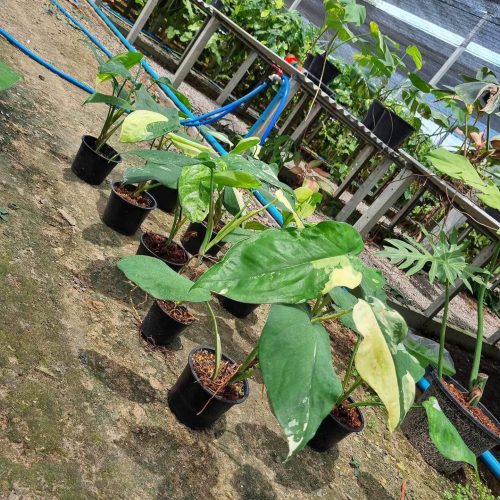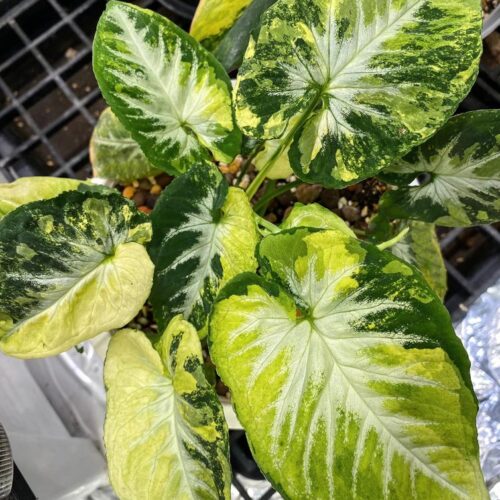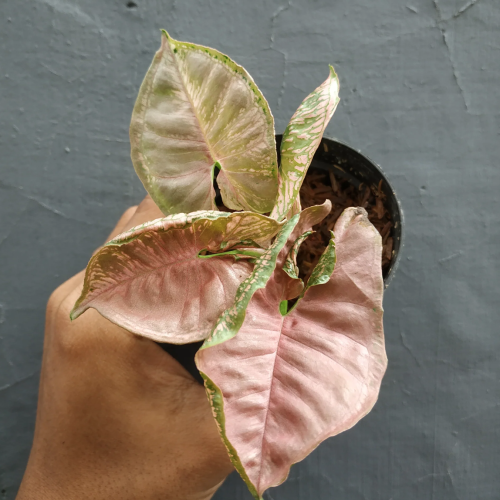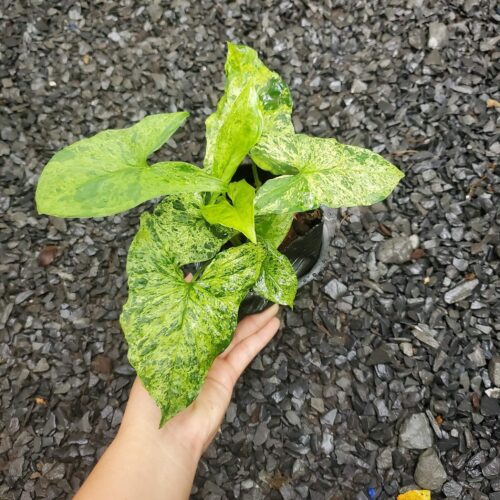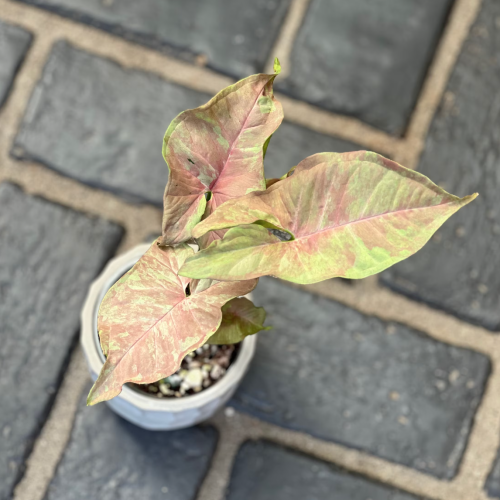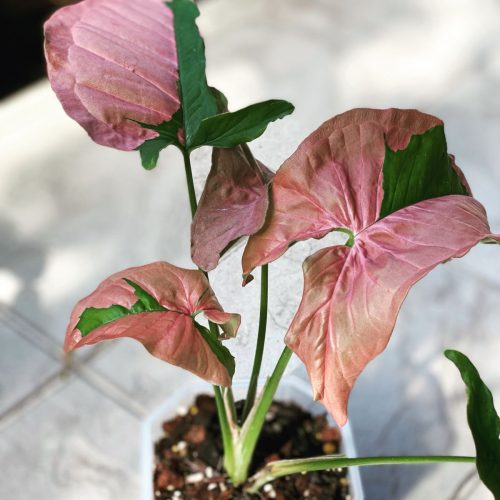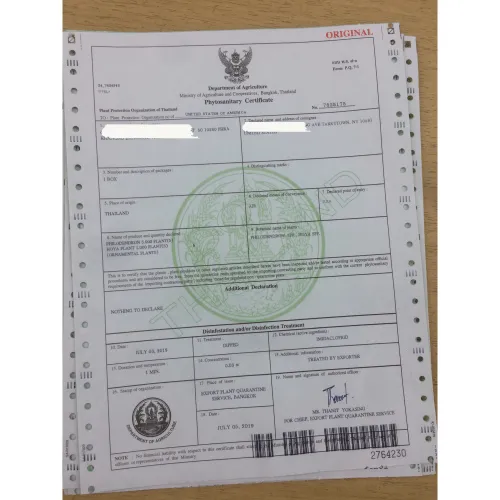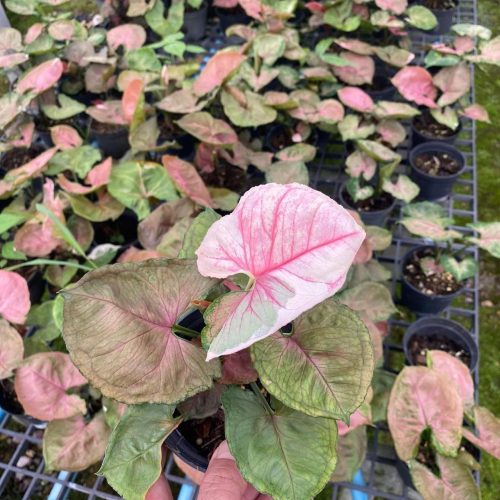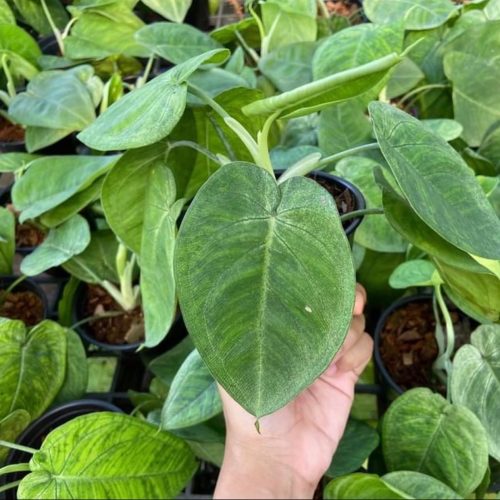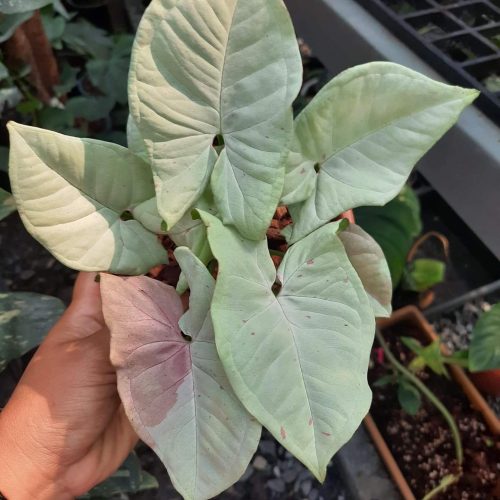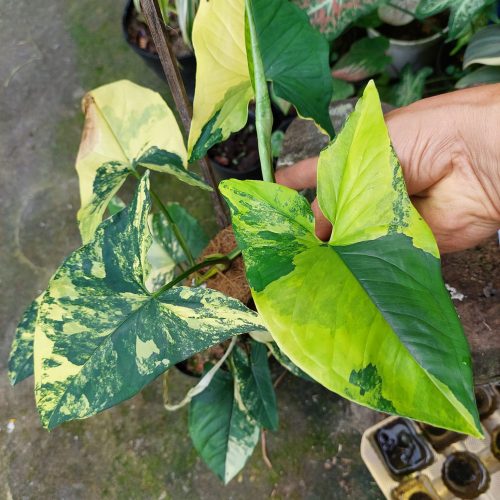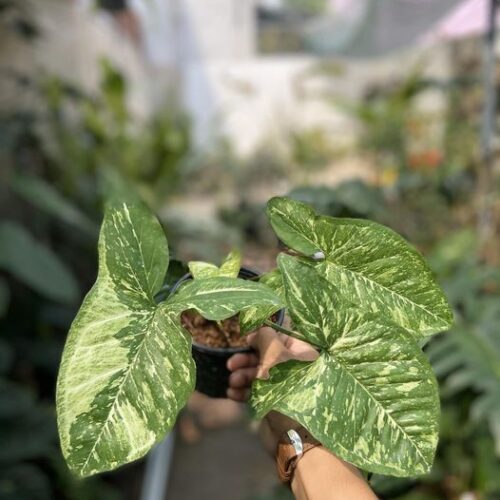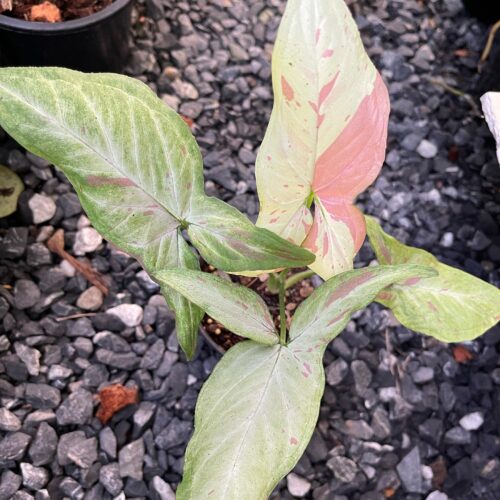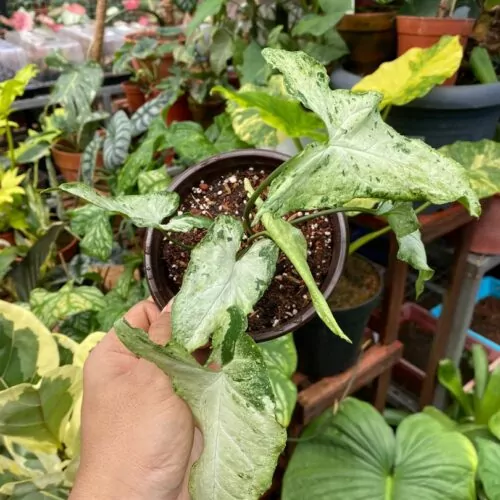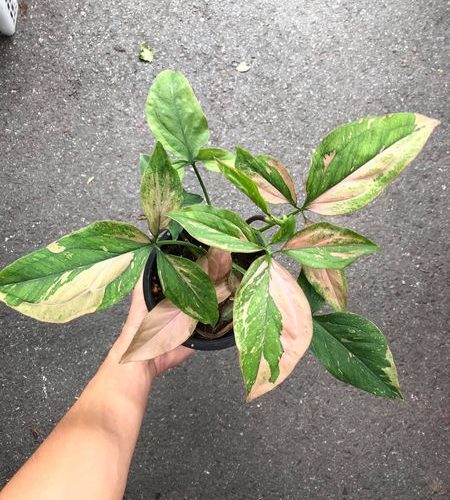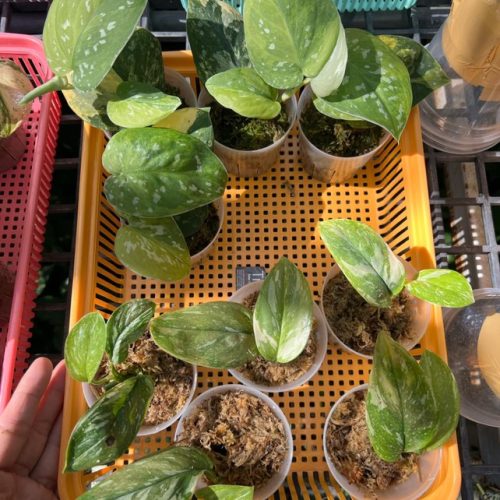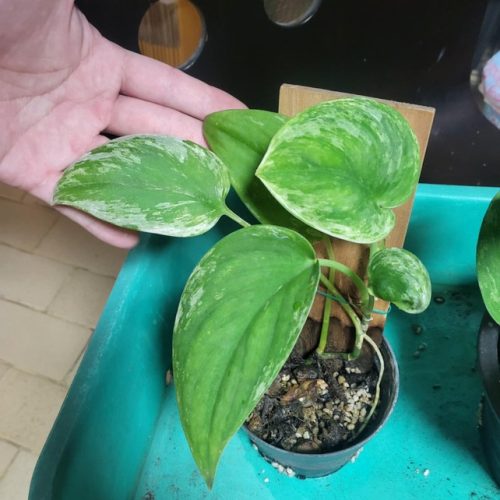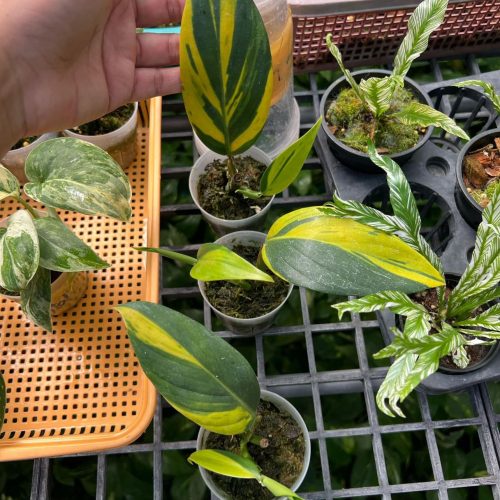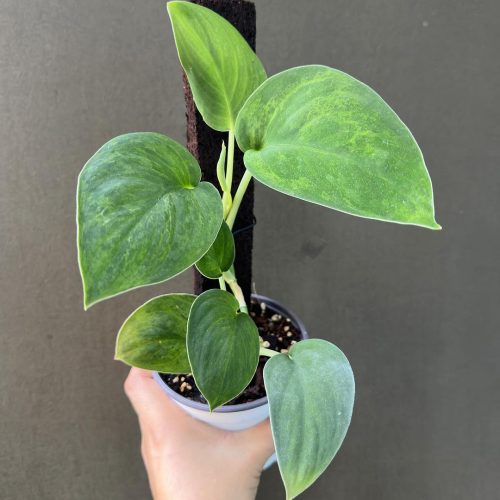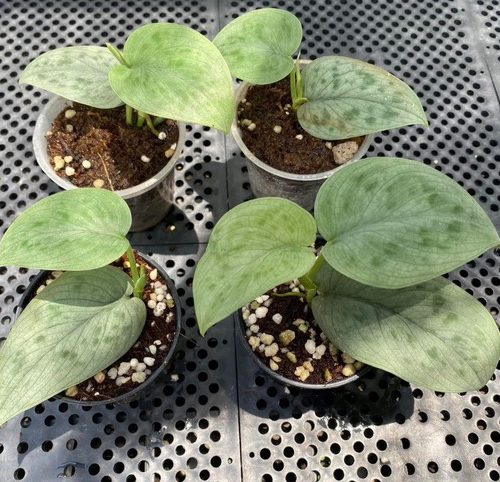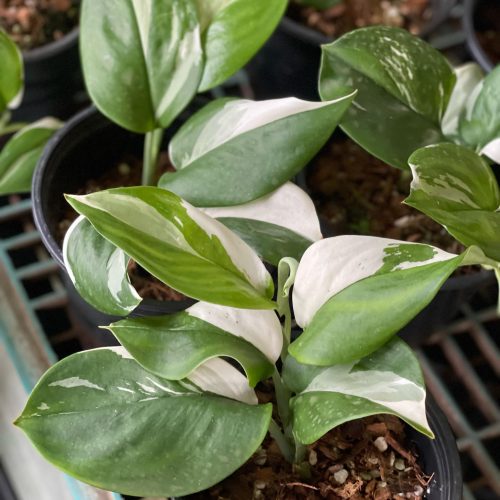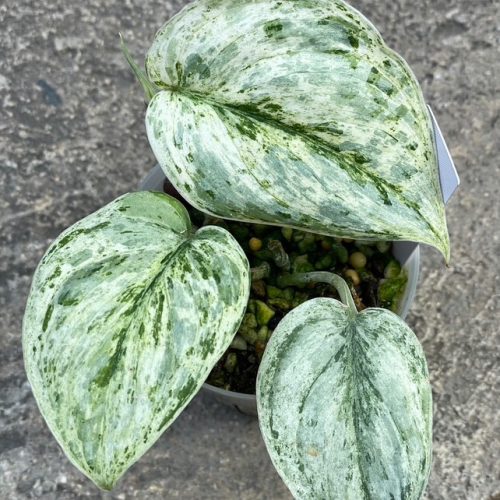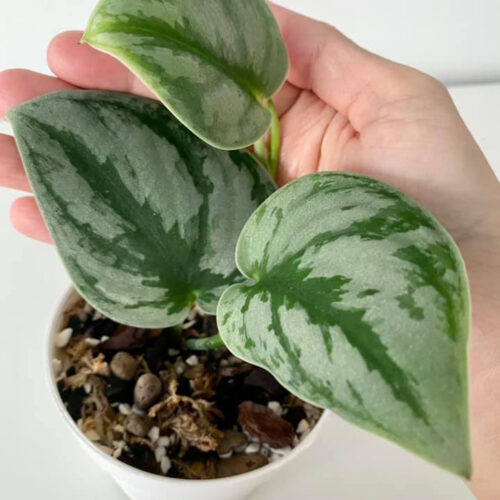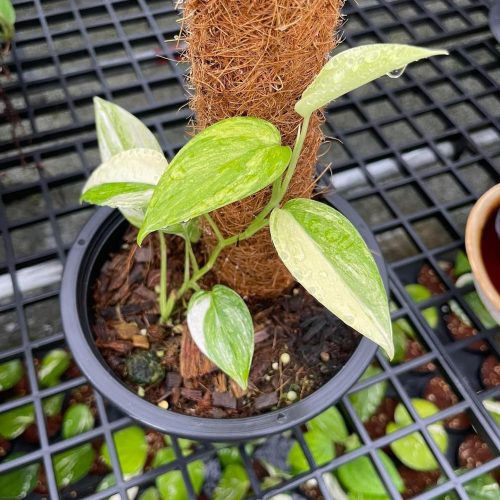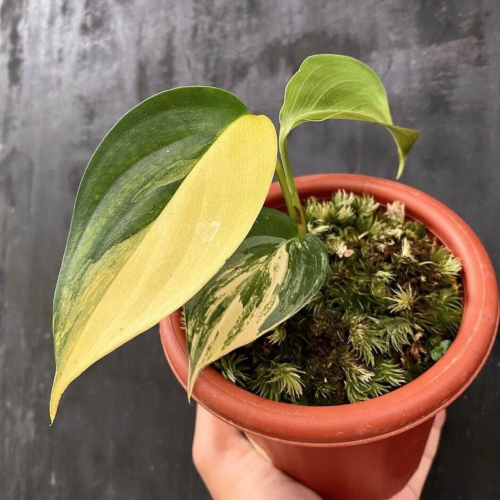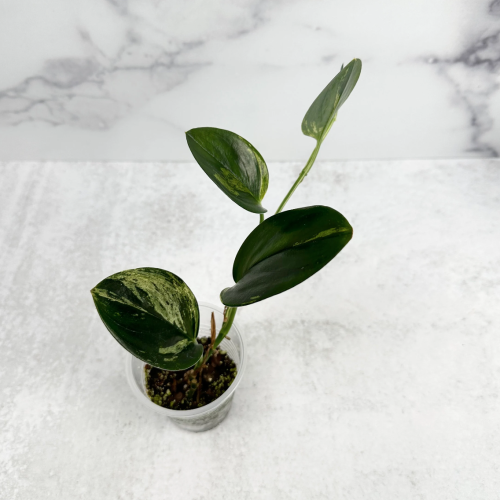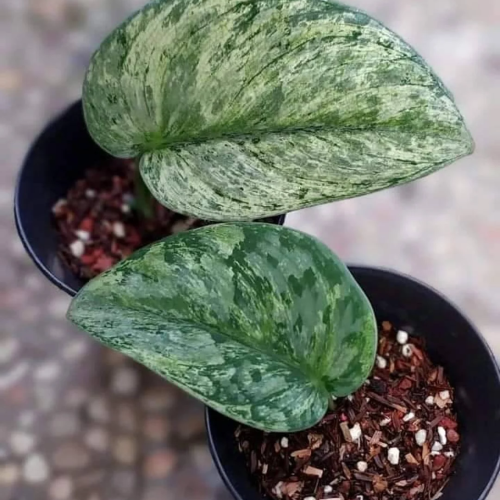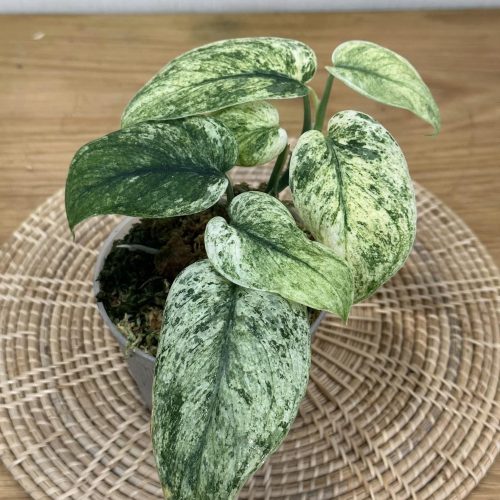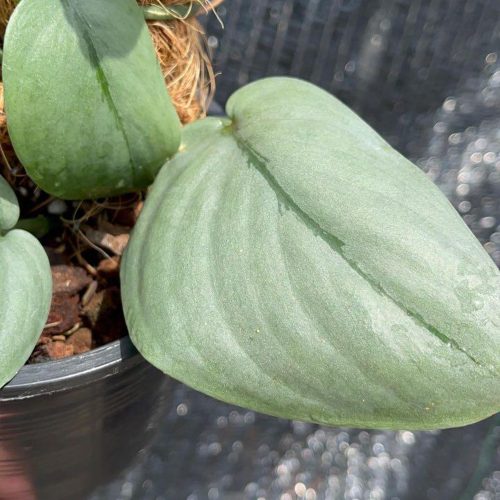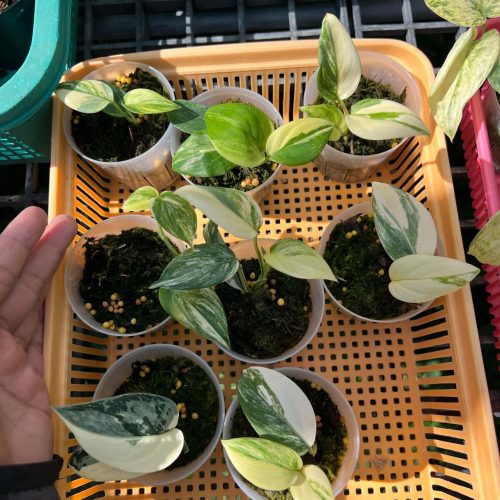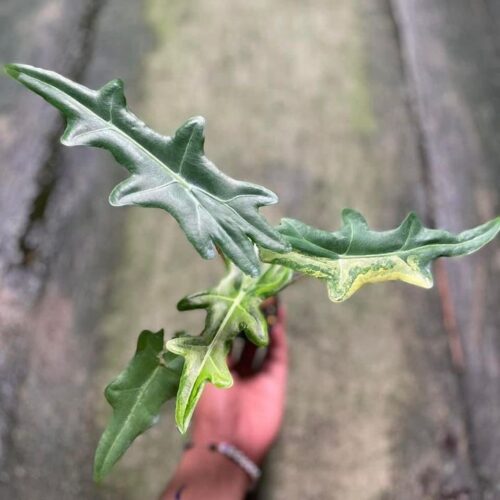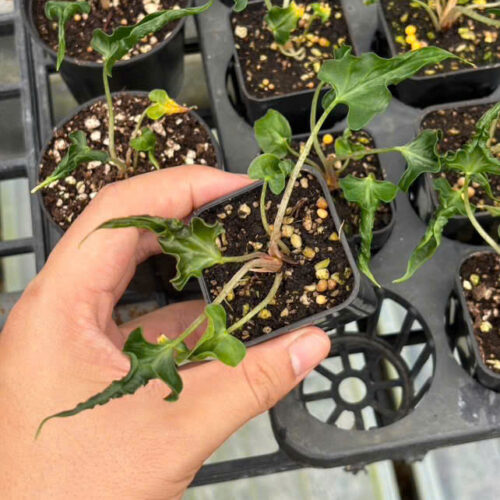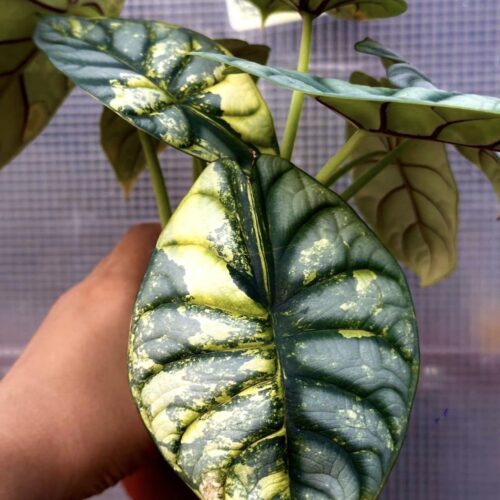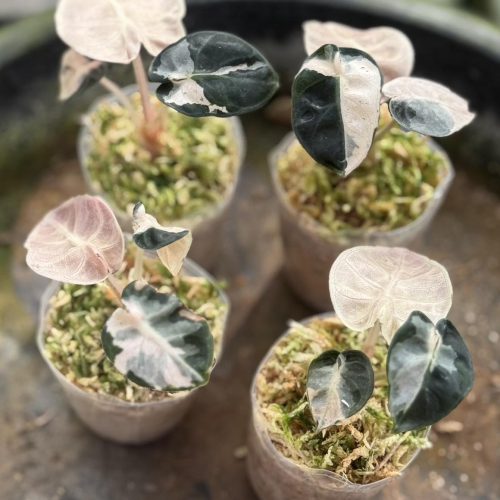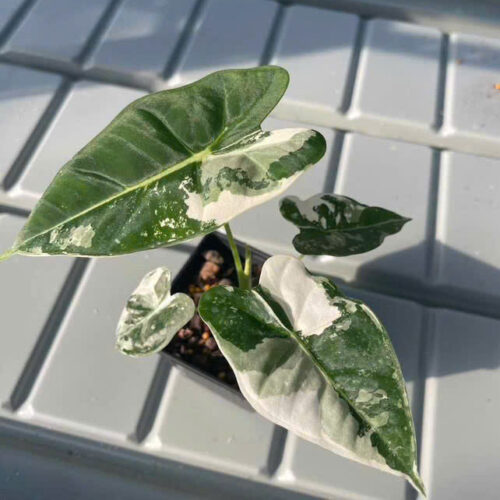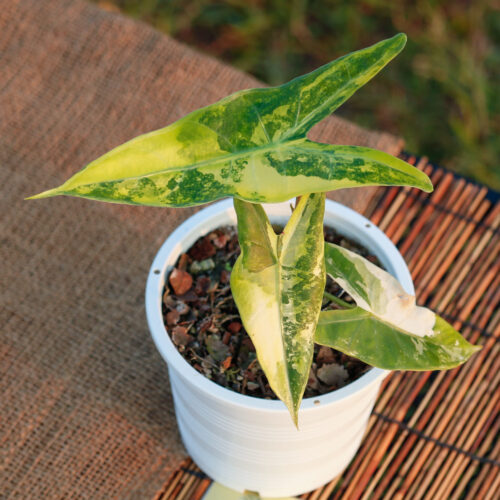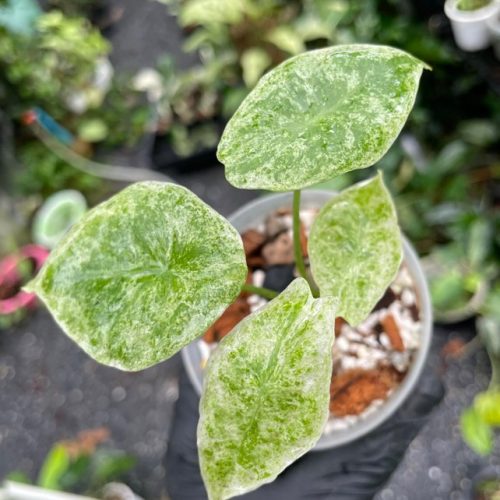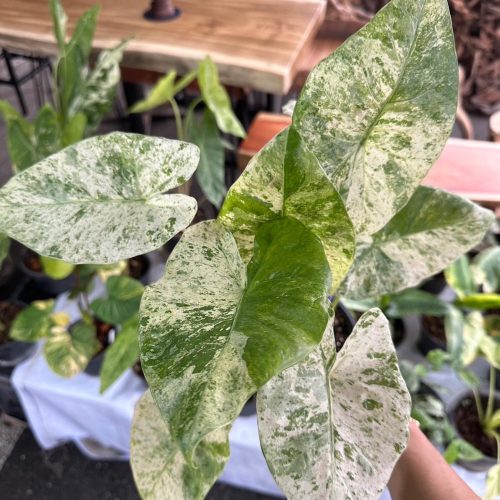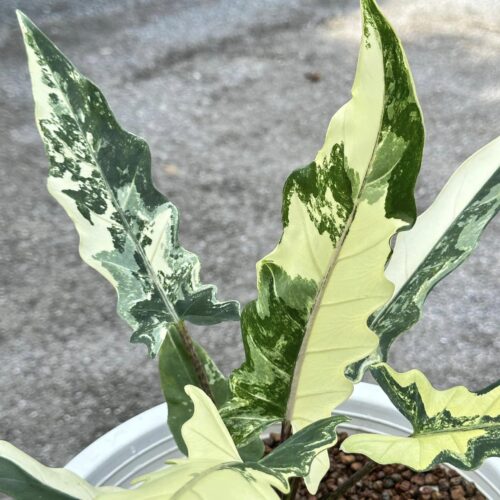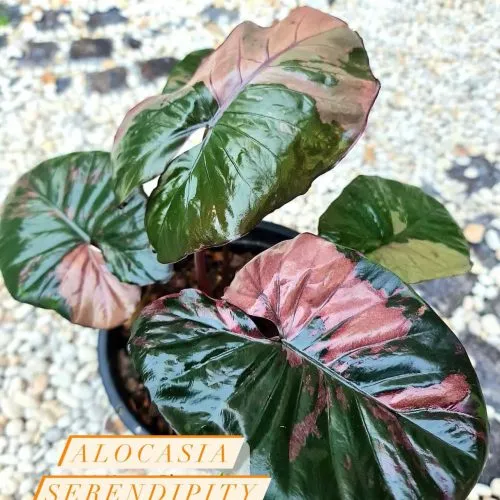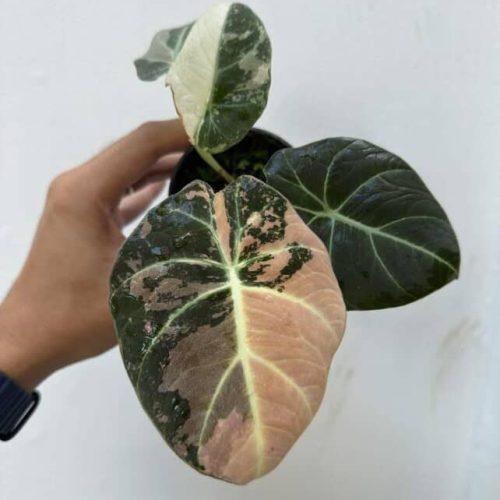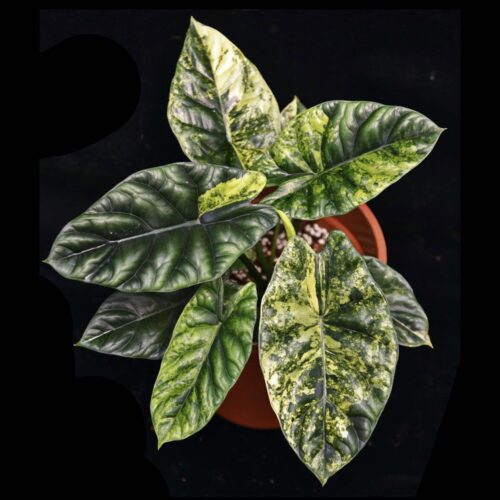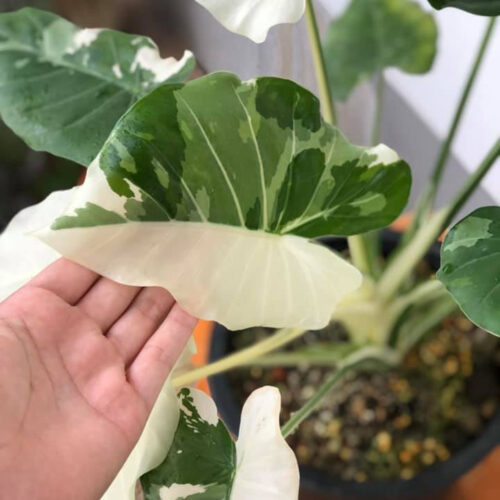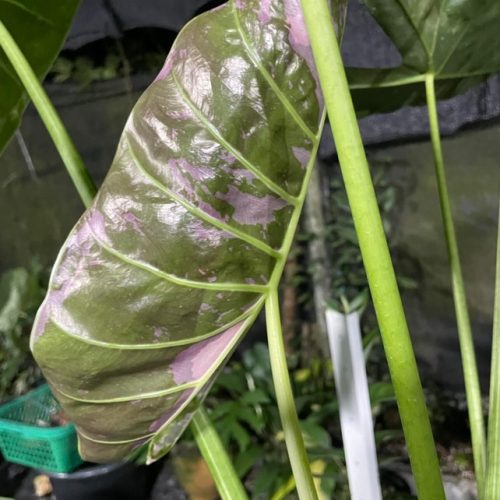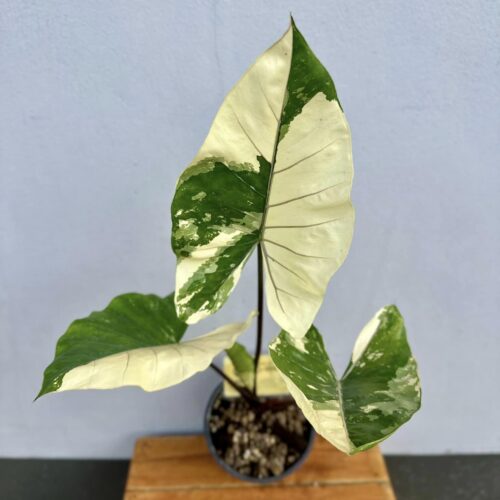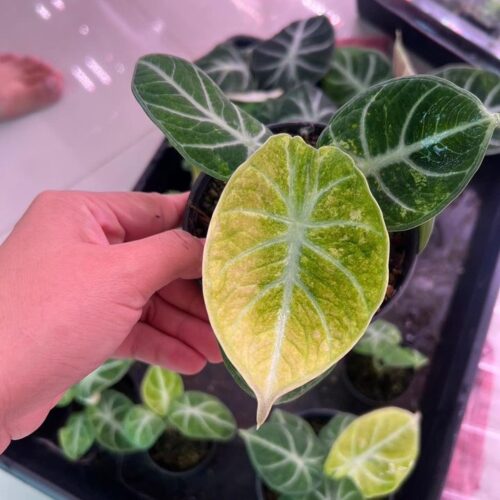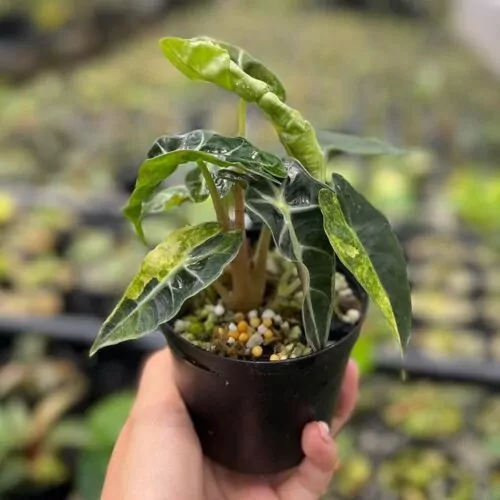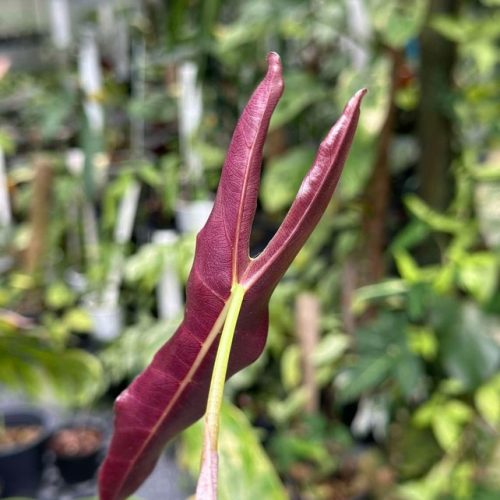Introduction to Alocasia Bambino Pink Variegated
The Alocasia Bambino Pink Variegated is a striking member of the aroid plant family, which also includes popular varieties like Philodendron, Monstera, and Anthurium. This plant is native to Southeast Asia and is prized for its vibrant leaves, which feature shades of pink, green, and white. Its compact size makes it perfect for adding a splash of color to small spaces, similar to Aglaonema and Homalomena.
History and Origin of Alocasia Bambino Pink Variegated
While we’re accustomed to seeing these beautiful plants in our living rooms or offices, do you know where they originate? The Alocasia Bambino Pink Variegated hails from the tropical rainforests of Southeast Asia. Its ancestors have adapted to the rich, moisture-laden soils, and dense, shady undergrowth of this region.
For more information on the origins and diversity of Alocasia species, see “5 Must-Know Secrets of Alocasia Plants.”
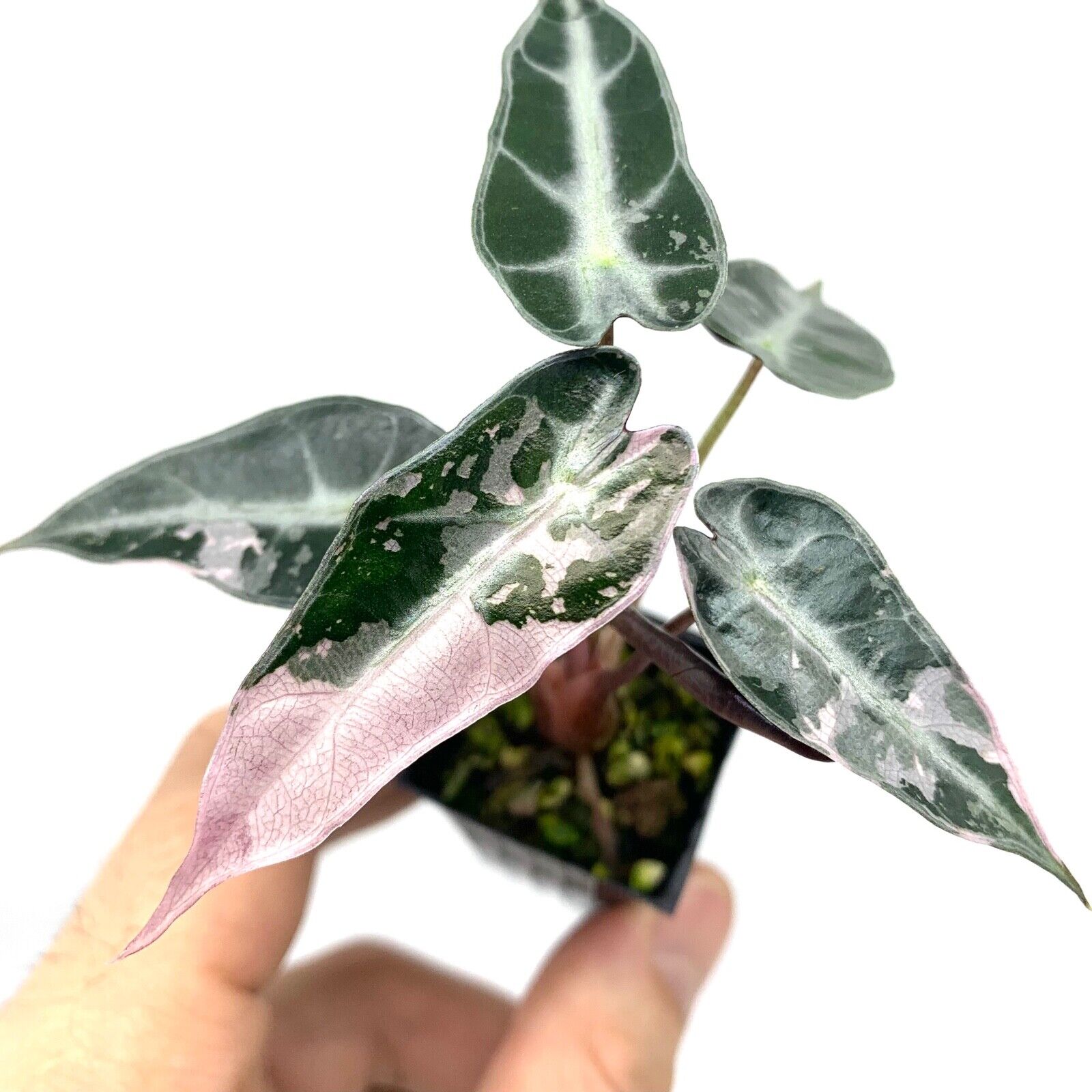
Characteristics of Alocasia Bambino Pink Variegated
Appearance
Known for their dramatic visual appeal, these plants boast stunning variegated leaves with a unique pink hue. Intriguing, right? Let’s break this down further.
Leaf structure
Each leaf, or better put, each piece of natural artwork, is deep green with irregular patches of pale pink. The leaves are arrow-shaped, and the texture is akin to a rich velvet fabric, adding a touch of elegance and sophistication.
Growth pattern
The Alocasia Bambino Pink Variegated grows in clumps, with each new leaf emerging from the center and unfolding to reveal its colors. It can reach a height of around 12 inches, making it a perfect fit for your tabletops or shelves.
Root system
This plant has a robust root system that supports the upright growth of its stem and leaves. The roots also store water and nutrients, helping the plant survive in different environmental conditions.
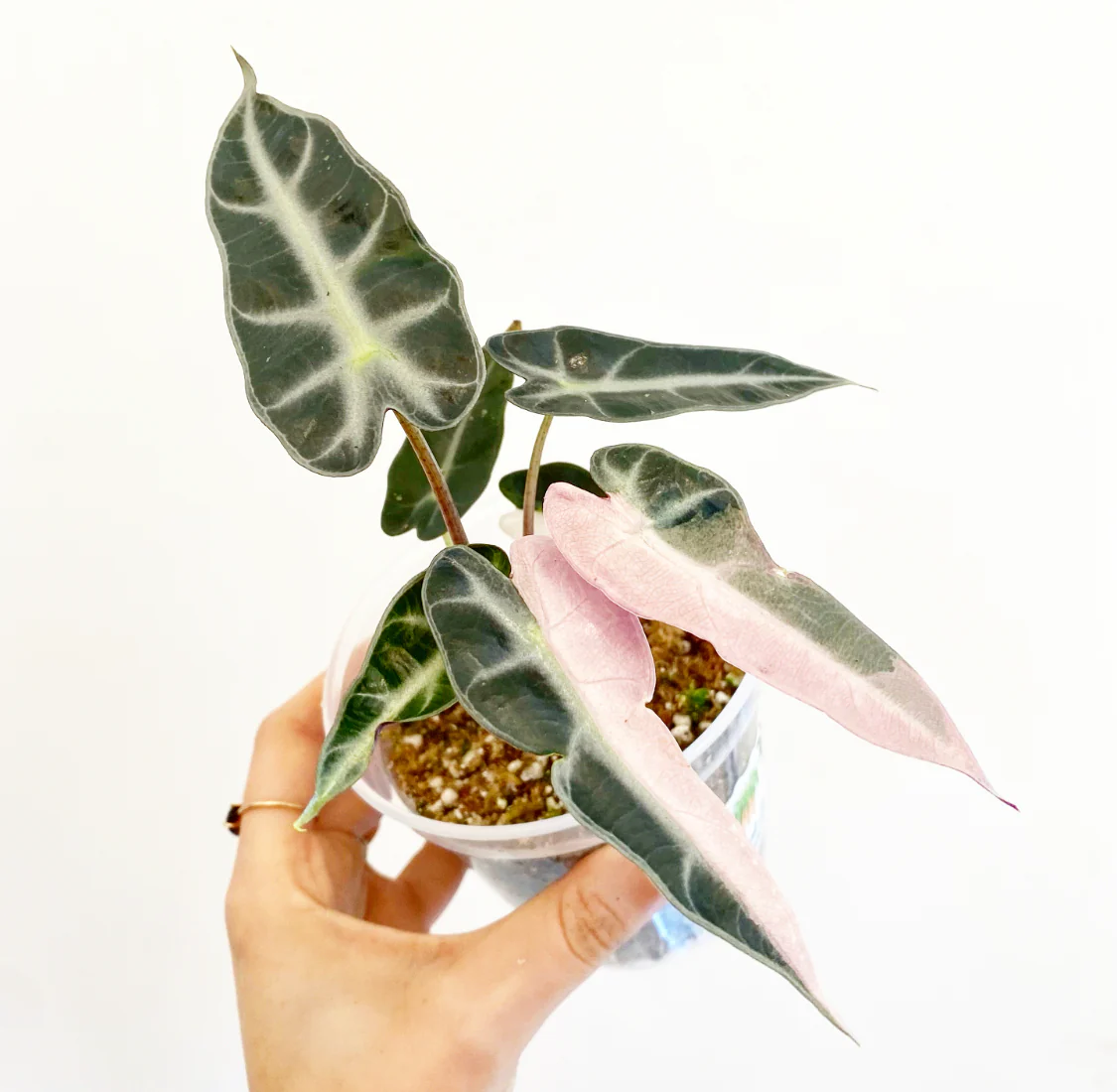
“Discover the rare beauty of the Alocasia Bambino Pink Variegated! Click now to embrace this unique addition to your plant collection.”
Caring for Your Alocasia Bambino Pink Variegated
So, how can we ensure these beauties flourish in our care? Let’s explore the secrets of keeping a happy and healthy Alocasia Bambino Pink Variegated.
Lighting requirements
The Alocasia Bambino Pink Variegated thrives in bright, indirect light. Direct sunlight can scorch its delicate leaves, while too little light can result in faded colors. An ideal location is near an east or west-facing window where the plant can receive filtered light. This lighting condition is also suitable for other tropical plants like Epipremnum and Syngonium.
Watering guidelines
Proper watering is crucial for the health of your Alocasia Bambino Pink Variegated. Water the plant when the top inch of soil feels dry, ensuring the pot has good drainage to prevent root rot. This plant loves high humidity levels, much like Fern (Platycerium) and Dischidia. You can increase humidity by misting the leaves regularly, placing a humidifier nearby, or setting the pot on a tray filled with pebbles and water.
Humidity needs
Coming from a humid environment, the Alocasia Bambino Pink Variegated loves moisture in the air. A regular misting routine or placement in a humid spot like your bathroom would be greatly appreciated by this plant.
Soil composition
A well-draining potting mix is essential for the Alocasia Bambino Pink Variegated. A mix containing peat, perlite, and orchid bark works well. Fertilize your plant monthly during the growing season (spring and summer) with a balanced, water-soluble fertilizer. Reduce feeding in the fall and winter when the plant’s growth slows down. This routine is beneficial for other houseplants, including Sansevieria and Scindapsus.
Fertilizing procedure
Feed your Alocasia with a balanced houseplant fertilizer every two weeks during the growing season. But remember, less is more. Over-fertilizing can harm your plant.
Repotting recommendations
Repot your Alocasia Bambino Pink Variegated once it outgrows its current pot, or every two years, whichever comes first. This gives the plant more room to grow and renews the nutrient content in the soil.
To learn more about the specific care needs and tips for thriving Alocasia indoors, you might want to read “5 Tips to Grow Alocasia Indoors.”
Alocasia species are the most sought after by aroid plant lovers
Propagating Alocasia Bambino Pink Variegated
Division method
Pruning helps maintain the shape and encourages bushier growth of your Alocasia Bambino Pink Variegated. Remove any yellow or damaged leaves with clean, sharp scissors. This plant can be propagated through division. When repotting, gently separate the offsets from the main plant and pot them individually. Propagation is a popular method for increasing your collection of plants like Hoya Plants and Rhaphidophora.
Leaf cuttings
Another method is to use leaf cuttings, although this is slightly more complex. A cutting with a visible node or root is needed. Plant this in a pot with well-draining soil and watch your new Alocasia come to life.
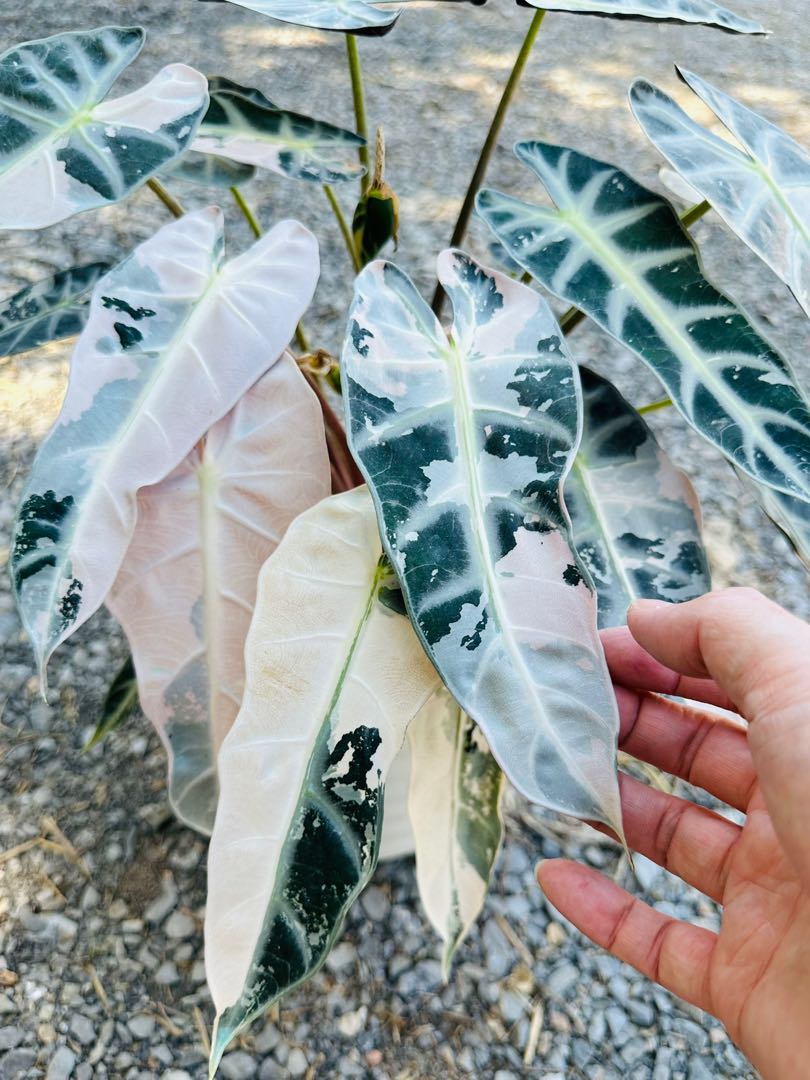
Troubleshooting Common Problems
Despite our best efforts, plants can still run into issues. But don’t worry, let’s identify the most common problems and their solutions.
Yellowing leaves
This could be a sign of overwatering or inadequate light. Assess your care routine and adjust as necessary.
Root rot
Often the result of overwatering or poor soil drainage, root rot can be mitigated by adjusting watering practices and ensuring your plant is in well-draining soil.
Pests
Watch out for common pests like spider mites, mealybugs, or aphids. Use an organic insecticidal soap to tackle these unwelcome visitors.
If you encounter any issues with your Alocasia, additional help can be found in the document “5 Must-Know Tips for Growing Alocasia.”
Benefits of Alocasia Bambino Pink Variegated
Now that we know how to care for our plant let’s see what it brings to the table.
Aesthetic value
With its stunning colors and unique leaf patterns, this Alocasia is sure to be the star of your indoor plant collection. It can transform any space into a tropical paradise.
Air purification
Like many houseplants, the Alocasia Bambino Pink Variegated is believed to help purify the air, removing toxins and improving indoor air quality.
Boosting mood and productivity
Studies show that having plants around can boost your mood and productivity. It’s not just about the beauty; it’s about the positive vibes that plants bring.
Conclusion
The Alocasia Bambino Pink Variegated is more than just a houseplant; it’s a statement piece. With its brilliant color, striking variegation, and tropical charm, it’s a plant that begs to be admired. With a bit of care and love, you can enjoy the delightful presence of this unique plant in your indoor garden.
1. How often should I water my Alocasia Bambino Pink Variegated?
The watering frequency depends on many factors like light, temperature, and humidity. As a rule of thumb, wait until the top 1-2 inches of soil dry out between watering. In a typical indoor setting, this might mean watering once a week.
2. Can the Alocasia Bambino Pink Variegated grow in low light?
The Alocasia Bambino Pink Variegated prefers bright, indirect light. It can tolerate lower light conditions for a while, but its growth may slow down, and the leaf variegation may fade. So, it’s best to place it in a well-lit spot, but away from direct sunlight.
3. Why are the leaves on my Alocasia turning yellow?
Yellow leaves can be a sign of various issues such as overwatering, underwatering, or not enough light. Check your plant care routine. If the plant is overwatered, allow the soil to dry out before watering again. If it’s not getting enough light, move it to a brighter location.
4. How can I propagate my Alocasia Bambino Pink Variegated?
You can propagate this plant by division or leaf cuttings. The division method involves separating a part of the plant with roots during repotting and planting it in a new pot. Leaf cuttings require a bit more care. You need a healthy leaf with a visible node or root. Plant this in a pot with well-draining soil and maintain a warm, humid environment to encourage root growth.
5. What are some common pests that affect the Alocasia Bambino Pink Variegated?
The Alocasia Bambino Pink Variegated can be affected by common houseplant pests such as spider mites, mealybugs, and aphids. If you notice signs of pests, treat the plant with an organic insecticidal soap or neem oil, and isolate it from other plants to prevent the pests from spreading.





















